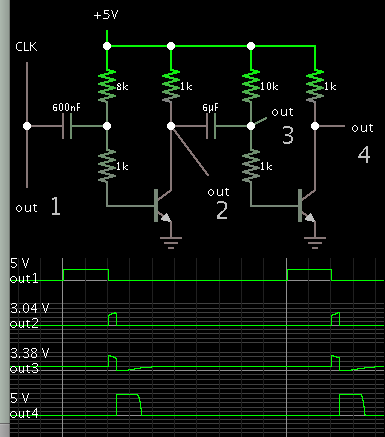xmen_xwk
Full Member level 3
I have a simple PWM with low frequency(like 10Hz) coming out of uC. Now I want to have another pulse generated after a pulse from uC.
eg

I saw some dead time generator on google, but they all are inverting. Like their HIGH and LOW swaps. However what I need is, if there is no pulse, the other should stay LOW. It should only create pulse when there is pulse on input.
Is there any chip for that ?
eg

I saw some dead time generator on google, but they all are inverting. Like their HIGH and LOW swaps. However what I need is, if there is no pulse, the other should stay LOW. It should only create pulse when there is pulse on input.
Is there any chip for that ?

